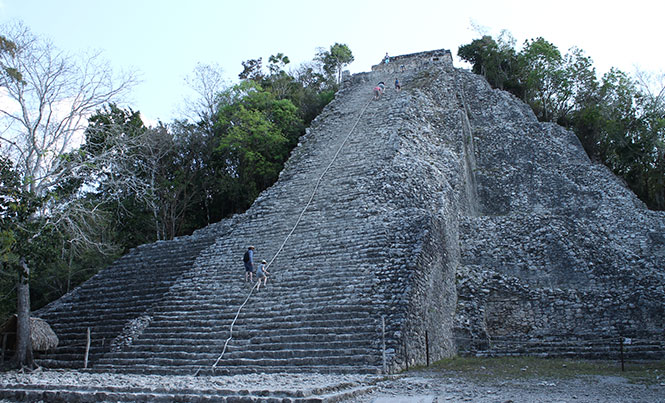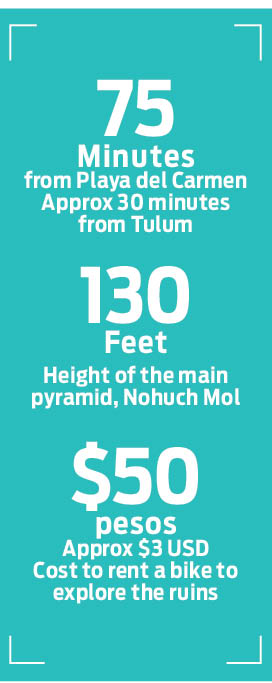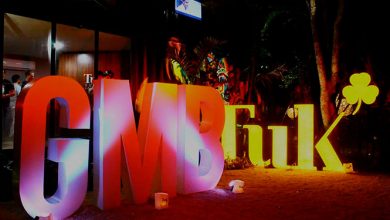Day Tripping: Coba

Sure, this archaeological site doesn’t have the stunning beach of Tulum but the harrowing climb up Nohuch Mol delivers a breathtaking view from the top of the Maya world
While my sisters were in town, I wanted to be sure they had the opportunity to visit one of our many archaeological sites that are close to Playa. The Tulum site is a short drive from Playa and an idyllic spot, but it gets really hot and crowded. Chichen Itza is a bucket list location for sure, but it is a longer drive, and I had already dragged them all over the Peninsula. I needed a place that wasn’t too far away, didn´t have the blaring sun of Tulum, and appealed to my sister´s bird obsession.
Nestled in the jungle about an hour and 15 minutes from Playa del Carmen and about 30 minutes from Tulum, Coba is a beautiful site that offers a rich history of the Maya and, unlike Tulum, lots of shade!
 The Maya city of Coba was at its peak between 500 and 900 AD and close to 50,000 people lived there. It was an important location commercially as it provided a connection between the coastline to the inland cities.
The Maya city of Coba was at its peak between 500 and 900 AD and close to 50,000 people lived there. It was an important location commercially as it provided a connection between the coastline to the inland cities.
The site hosts a number of different buildings that have been excavated, as well as buildings that have not. It has a much more ¨wild¨ feel than Chichen Itza, and you feel a bit like you are discovering these places yourself. The main pyramid, known as Nohuch Mol, is about 130 feet high and yes, you can climb it. It is a very steep climb and is definitely challenging for those who a bit out of shape. It was at the top that I discovered my father’s fear of heights recently manifested itself in my brain as I contemplated the long and incredibly steep climb down. Impeccable timing on my part.
How to Get There:
ADO has a bus that leaves from Playa del Carmen at 9:01 and you arrive in Coba at approximately 11:10. The return bus from Coba leaves at 3:10. The bus does not drop you off at the entrance but just a short walk up the road from the ruins. We recommend buying a round trip ticket.
A rental car is a great option for a day trip to Coba. Having your own transportation allows you to get to the ruins early before the tour buses arrive.
What to Do When you Arrive:
You have the option of hiring a guide to take you through the ruins. Although we chose not to the day we went, I have hired guides at other sites, and it really adds to the experience to hire a guide.
Recommendations:
- Get there early. The site opens at 8:00. If you get there early, you will feel like you have the site to yourself. We arrived around 9:00 and it still felt empty. By the time we left at 12:30, the parking lot was packed, and all the bikes were rented.
- Rent a bicycle and head to Nohuch Mol (the largest pyramid) first. Climb the pyramid early when there aren’t many people there. I climbed it once where it was crowded. It was not enjoyable.
- Bring water. Yes, there is shade but the jungle still gets very hot.
- Wear comfortable shoes. I know, that´s a little obvious but if you’re going to climb the pyramid, be smart about your footwear.
- Hire a guide. Get the most out of the experience. You will learn fascinating facts about the history and culture of the people whose land you are exploring.







